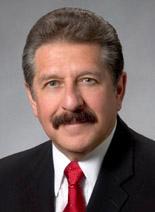Enrollment target missed

:
October 25, 2007
Thanks to multiple outreach programs, administrative efforts and regional population growth, Sacramento State experienced a record-high enrollment this fall, with nearly 300 more students than last semester. Despite various outreach efforts and programs, the university still failed to meet its target.
Although Sac State missed its goal by nearly half of a percent, universityadministrators are continuing to increase enrollment numbers by devising additional ways of reaching out to potential students.
Vice President for Student Affairs Lori Varlotta said in order to increase enrollment, faculty and staff must be more aggressive with recruitment, communicate better with high schools and community colleges and support students who need academic help.
Other administrators have communicated, and together, devised similar plans to increase enrollment.
Associate Vice President for Enrollment Management Edward Mills said that in order to recruit students, admission notifications must be sped up and Sac State must extend its outreach outside of the region into areas that are growing at a faster rate, such as Southern California.
Mills said in previous years, Sac State did not put forth any extra effort to recruit students outside of Northern California.
Provost and Vice President for Academic Affairs Joe Sheley believes the university’s current outreach efforts will continue to have a positive effect on the university.
“More systematic recruitment efforts and better communication techniques will take us a long way,” Sheley said.
Mills said Sac State representatives have visited high schools and college fairs outside the region to reach out to students and detail some of the school’s many strengths. He said he, personally, sent out more e-mails to students who have taken the SAT, inviting them to visit the school’s website.
Sheley emphasized the significance of delivering the university’s strengths to potential students.
“We have begun to get the word out about how good we are,” Sheley said. “It is important that we not assume that people know this, especially when most other universities are going to great pains to tell potential students about their strengths.”
Mills said Student Affairs has already begun the admissions process and admitted 400 students on Oct. 10. He said he will begin calling the admitted applicants this week.
“My goal is to help (incoming freshmen) get connected to the campus,” Mills said.
With administrators continuing to put forth effort, Mills said he is optimistic Sac State will meet its target number for spring.
“I don’t foresee any issues meeting this goal,” Mills said. “Right now, we are about 5 percent ahead of last year in admitted students for the spring, which is a very good sign.”
The enrollment target number, or full-time equivalent number, for all 23 campuses is set by the CSU system and is calculated by the number of students who possess 15 units or more.
The target for each campus is based on regional demographics and the school’s location. The numbers are then negotiated with all 23 CSU presidents.
The state provides funding for CSU schools based on their FTE target number. This money can be used for additional classrooms, new courses, more professors and off-campus field trips, among other things.
Most universities begin spending the money before the final enrollment numbers are released in February. If a school does not meet its target number, then it would need to return the money to the state, which might negatively impact students and staff.
Chair of the University Budget Advisory Committee Emir Macari said for example, a course might be canceled or a professor might be laid off due to lack of funding.
Mills said the CSU system as a whole exceeded its FTE target by approximately 10,000 students, which may benefit the university. He said because of this, Sac State may not have as much pressure to meet the FTE target this spring and may not need to return any money.
Macari said the UBAC concluded that in order to emerge from the current financial situation of structural deficits, the committee must be more frugal on recommending how to spend funds.
He also said the UBAC put this plan into action last year and decreased the deficit from $7.5 million to approximately $4 million in one year. He said he hopes to once again significantly decrease the deficit by the end of this year.
The committee is devising ways of emerging from deficits without negatively impacting students and staff. To do so, UBAC asked all university departments to conserve money by participating less in field trips, postponing equipment purchases that may not be currently essential and refraining from hiring additional professors unless it is crucial.
Evelyn Bigelyaizen can be reached at [email protected].




























































































































